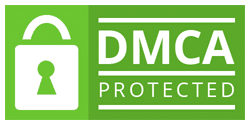2845
Assignment 2
Question 1 (30 marks)
The waste contributing steps to tomato processing industry is listed below with quantities and biochemical oxygen demand (BOD) and suspended solids (SS) values
Stream
Process Unit
Flow (L/min)
BOD (mg/L)
SS (mg/L)
#1
Prewashing units
1890
75
180
#2
Washer
1000
90
340
#3
Boiler feed water
1136
30
20
#4
Cooker
38
3520
7575
#5
Processing unit #1
76
4410
8890
#6
Processing unit #2
570
230
170
#7
Processing unit #3
380
450
540
a) Provide a suitable waste segregation (separation) and treatment scheme
b) What will be the flow and BOD concentration of the combined stream of #4 and #5
Question 2 (20 marks)
Suggest a treatment method for reuse or by-product recovery for the following wastes.
a. Dairy (milk) waste containing whey (protein) material
b. Cutting oil waste coming from metal cutting machines
c. Dye waste from cloth dyeing (textile) industry.
Question 3 (25 marks)
Using the flow diagram given below explain the role of
i) Filter
ii) Activated carbon
iii) Filter press
iv) Equalization (equalizing) tank.
Question 4 (25 marks)
(a) What are the 2 different environmental problems of using incinerators? How can they be overcome?
(b) Based on the data provided below, calculate the charges for disposal of the waste with and without recycling at the transfer station, and comment on these costs
Waste generated 10 tonnes
Recyclable waste 70 %
Transport costs $ 1 per tonne per km
Distance to landfill 120 km
Location of transfer station mid way
Cost of recovery at transfer station $10 per tonne
Sale value of recyclable goods $15 per tonne
Tipping cost $40 per tonne
Attachments:
 assignm-2-bea….docx
assignm-2-bea….docx beauty-assign….docx
beauty-assign….docx





